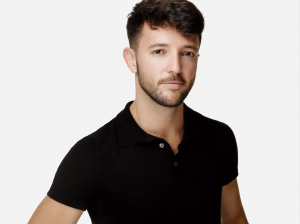Montréal, Tuesday, June 2, 2020 – The economic recovery plan for the cultural sector, unveiled yesterday by Minister Nathalie Roy, opens up a few prospects for recovery in dance while leaving many questions and concerns unanswered. The Regroupement québécois de la danse (RQD) applauds some of these initial measures, emphasizing that they need to be followed by substantial investments in order to ensure the survival and successful recovery of the dance sector. The sector covered by the RQD is an extremely precarious one and has been particularly weakened by this crisis and our main concern is the support being offered to independent artists, self-employed workers and small organizations.
Among the encouraging components of the Ministry of Culture and Communications (MCC) plan is the support for productions in new venues adapted to the context of physical distancing, such as walking tours and other outdoor shows, as well as support for the simultaneous presentation of shows in several venues and online, which some companies are considering already. Funding for rental of spaces and remuneration of artists during their training is also excellent news, considering a dancers’ essential requirement is to sustain their physical condition in order to be ready for a revival. Support for alternative and private venues to promote the next generation of dancers provides a much-needed boost to the sector, but the MCC must not forget that in dance, many intermediate and even established artists and companies are still working in unstable situations. Monies being made available to document the effects of the pandemic on the cultural sector and to support real estate and equipment acquisition projects is also reassuring.
However, this first phase of the MCC’s economic recovery plan gives the best benefits to the arts industries, particularly the audiovisual and film industries, major events and digital distribution. But the RQD fears heavy losses in the dance sector, which is made up largely of self-employed workers and project-funded organizations. For example, of the $400 million announced by the MCC, of which $250 million is new money, only $6.5 million is allocated to increasing funds for grant programs and an emergency fund for artists who are currently being supported by the Canadian Emergency Relief Benefit (CERB).
“Many artists may not have access to this new emergency fund, which we are told will be managed by the Union des artistes and the Musicians Guild and reserved for extreme situations,” says artist and teacher Jamie Wright, co-chair of the RQD. “What will happen to all the performers who will not get contracts because most of the work will be produced with fewer dancers? And what will happen to all the artistic and technical collaborators who won’t have jobs?”
“We must also find a way to stabilize small organizations,” adds choreographer-manager Lük Fleury, co-chair of the RQD. “Otherwise, when the time comes to revive them, they won’t be solid enough to resume their activities. Amongst these organizations, as well as among the self-employed, (who will soon be ineligible for the social safety net of the CERB), there are many individuals belonging to other artist representation groups. It would be a shame if all the inclusion efforts made in recent years by the Conseil des arts et des lettres du Québec were wasted.”
The possibility that venues will reopen by St. Jean Baptiste Day also makes the investment in arts promotion particularly welcome. This will be necessary in order to encourage an audience faced with the fear of contagion and the overabundance of supply, to participate. But beyond the promotion of Quebec cultural products, the RQD is calling on the government to jumpstart a campaign that promotes the arts, including the human body and dance, which will extol all their benefits and ultimately transform the perception of the arts by the general public.
Finally, dance will undoubtedly benefit from the $20 million allocated to digital projects of all kinds, with a strong emphasis on the dissemination of works and events online. However, it will not be enough. The tradition of this living art form is still possible; all that is missing is the funding to give artists time to think about the myriad characteristics it could take on in times of a pandemic.
The RQD
The Regroupement québécois de la danse brings together and represents professional individuals and organizations working in dance, with the aim of promoting the advancement and influence of the art of choreography and contributing to the improvement of conditions for dance practice.
– 30 –
Source:
Coralie Muroni
Director of Communications
Regroupement québécois de la danse
cmuroni@quebecdanse.org



